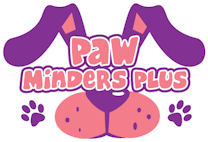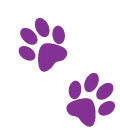Pet Care Articles
Millennials Reshaping Pet Industry Future
March 19th, 2016
Courtesy of Mediapost.com...
Millennial pet ownership grew 25% between 2007 and 2015 while the number of pet owners in the 35-and-older age group increased just 14%.
Even more significant, the majority of growth among Millennials came from multicultural young adults, thus making Latinos in particular a key Millennial pet owner segment. Packaged Facts projects that Millennials will be responsible for adding another 2.6 million pet owners between 2015 and 2020.
There are 43 million pet owners in the 18- to 34-year-old age group, accounting for 31% of all pet owners, according to market research publisher Packaged Facts in the report “Millennials as Pet Market Consumers.”
Millennials will account for an ever-growing share of pet expenditures in the years ahead because they represent a large population segment that will be entering a stage of life when expenditures on pet products and services jump dramatically. The aging of the American population could shift the consumer landscape for the pet industry because pet ownership traditionally has declined precipitously after the age of 60. In addition, the population of 40- to 54-year-olds — an age segment with a relatively high propensity to own and spend money on pets — is expected to decline.
While the pet industry previously has been reliant on the spending patterns of pet owners from the Baby Boomer and Gen X generations, Millennials are closing the gap. In 2014, households headed by Millennial consumers spent almost $11 billion on their pets.
The aging of the American population could shift the consumer landscape for the pet industry because pet ownership traditionally has declined precipitously after the age of 60. In addition, the population of 40- to 54-year-olds — an age segment with a relatively high propensity to own and spend money on pets — is expected to decline.
Millennials have become a strong consumer force in the pet market due to their sheer population numbers and the impressive buying power they bring to the table, says David Sprinkle, research director, Packaged Facts, in a release.
“They are more likely than other pet owners to both expect to spend and to actually spend more on higher-priced pet products and pet care services,” he adds.
Millennial pet ownership grew 25% between 2007 and 2015 while the number of pet owners in the 35-and-older age group increased just 14%.
Even more significant, the majority of growth among Millennials came from multicultural young adults, thus making Latinos in particular a key Millennial pet owner segment. Packaged Facts projects that Millennials will be responsible for adding another 2.6 million pet owners between 2015 and 2020.
There are 43 million pet owners in the 18- to 34-year-old age group, accounting for 31% of all pet owners, according to market research publisher Packaged Facts in the report “Millennials as Pet Market Consumers.”
Millennials will account for an ever-growing share of pet expenditures in the years ahead because they represent a large population segment that will be entering a stage of life when expenditures on pet products and services jump dramatically. The aging of the American population could shift the consumer landscape for the pet industry because pet ownership traditionally has declined precipitously after the age of 60. In addition, the population of 40- to 54-year-olds — an age segment with a relatively high propensity to own and spend money on pets — is expected to decline.
While the pet industry previously has been reliant on the spending patterns of pet owners from the Baby Boomer and Gen X generations, Millennials are closing the gap. In 2014, households headed by Millennial consumers spent almost $11 billion on their pets.
The aging of the American population could shift the consumer landscape for the pet industry because pet ownership traditionally has declined precipitously after the age of 60. In addition, the population of 40- to 54-year-olds — an age segment with a relatively high propensity to own and spend money on pets — is expected to decline.
Millennials have become a strong consumer force in the pet market due to their sheer population numbers and the impressive buying power they bring to the table, says David Sprinkle, research director, Packaged Facts, in a release.
“They are more likely than other pet owners to both expect to spend and to actually spend more on higher-priced pet products and pet care services,” he adds.


